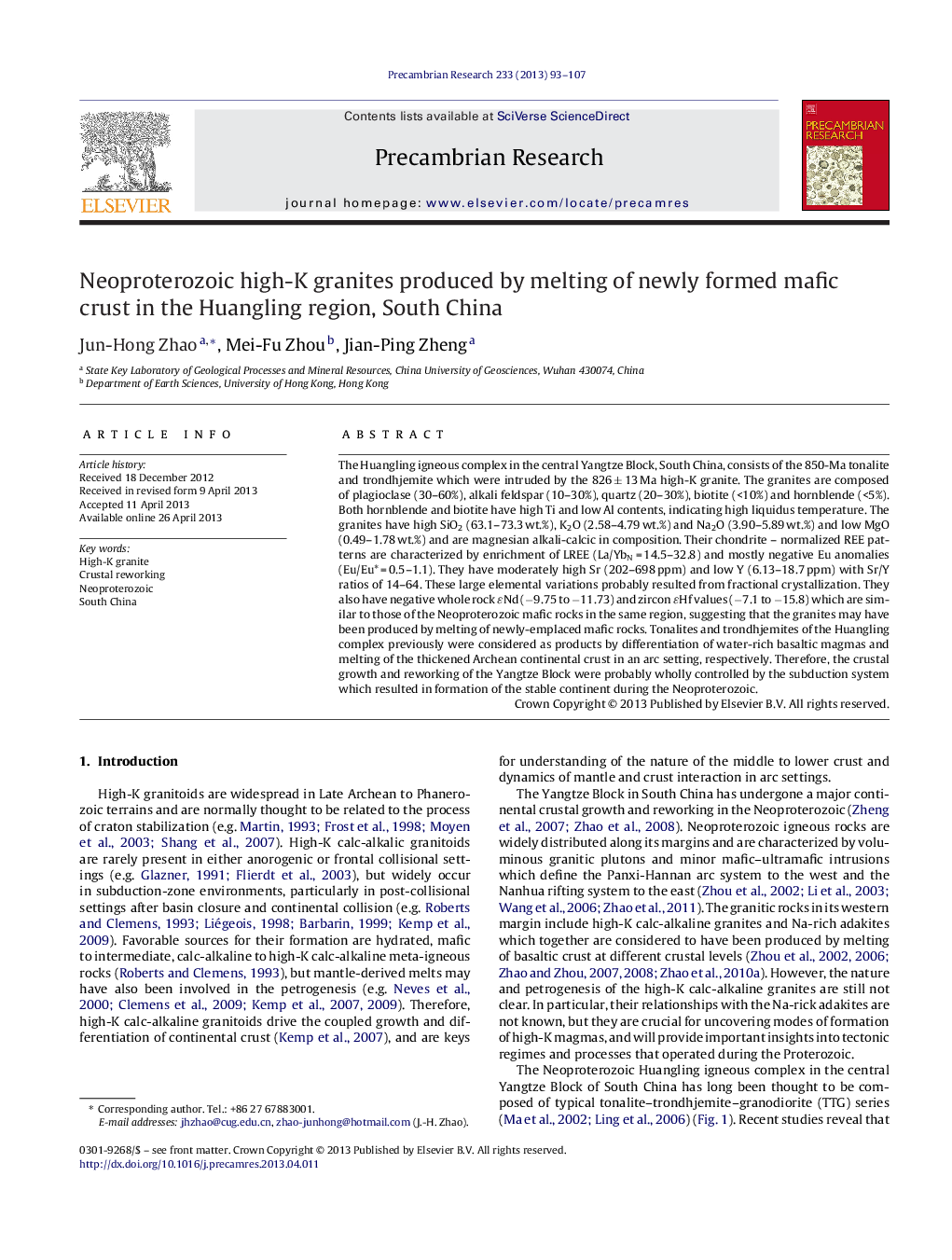| Article ID | Journal | Published Year | Pages | File Type |
|---|---|---|---|---|
| 6442337 | Precambrian Research | 2013 | 15 Pages |
Abstract
The Huangling igneous complex in the central Yangtze Block, South China, consists of the 850-Ma tonalite and trondhjemite which were intruded by the 826 ± 13 Ma high-K granite. The granites are composed of plagioclase (30-60%), alkali feldspar (10-30%), quartz (20-30%), biotite (<10%) and hornblende (<5%). Both hornblende and biotite have high Ti and low Al contents, indicating high liquidus temperature. The granites have high SiO2 (63.1-73.3 wt.%), K2O (2.58-4.79 wt.%) and Na2O (3.90-5.89 wt.%) and low MgO (0.49-1.78 wt.%) and are magnesian alkali-calcic in composition. Their chondrite - normalized REE patterns are characterized by enrichment of LREE (La/YbN = 14.5-32.8) and mostly negative Eu anomalies (Eu/Eu* = 0.5-1.1). They have moderately high Sr (202-698 ppm) and low Y (6.13-18.7 ppm) with Sr/Y ratios of 14-64. These large elemental variations probably resulted from fractional crystallization. They also have negative whole rock ÉNd (â9.75 to â11.73) and zircon ÉHf values (â7.1 to â15.8) which are similar to those of the Neoproterozoic mafic rocks in the same region, suggesting that the granites may have been produced by melting of newly-emplaced mafic rocks. Tonalites and trondhjemites of the Huangling complex previously were considered as products by differentiation of water-rich basaltic magmas and melting of the thickened Archean continental crust in an arc setting, respectively. Therefore, the crustal growth and reworking of the Yangtze Block were probably wholly controlled by the subduction system which resulted in formation of the stable continent during the Neoproterozoic.
Related Topics
Physical Sciences and Engineering
Earth and Planetary Sciences
Geochemistry and Petrology
Authors
Jun-Hong Zhao, Mei-Fu Zhou, Jian-Ping Zheng,
